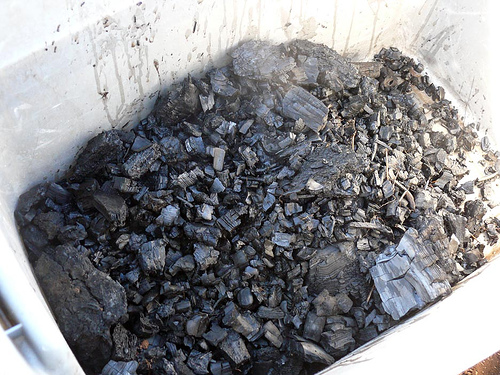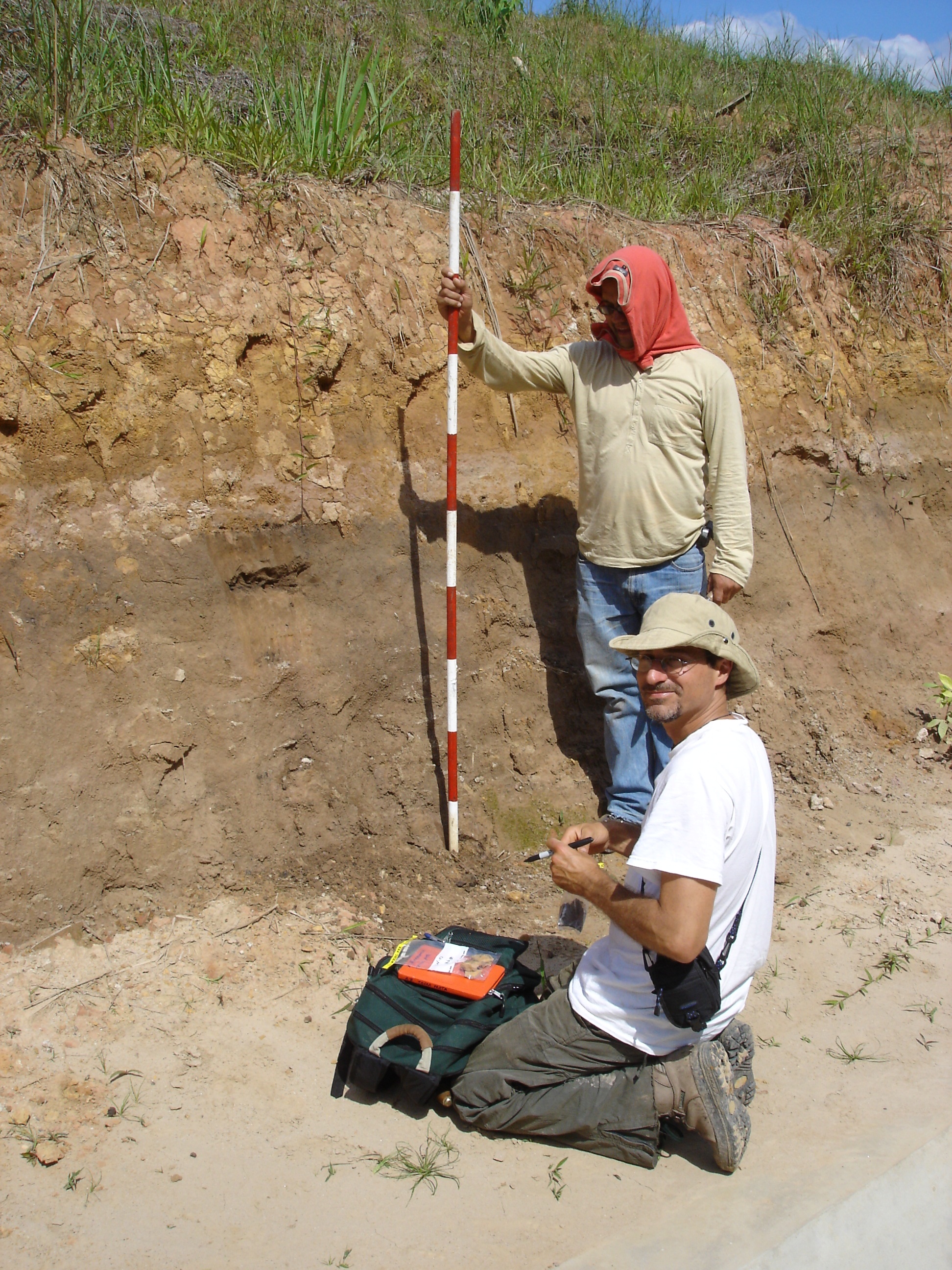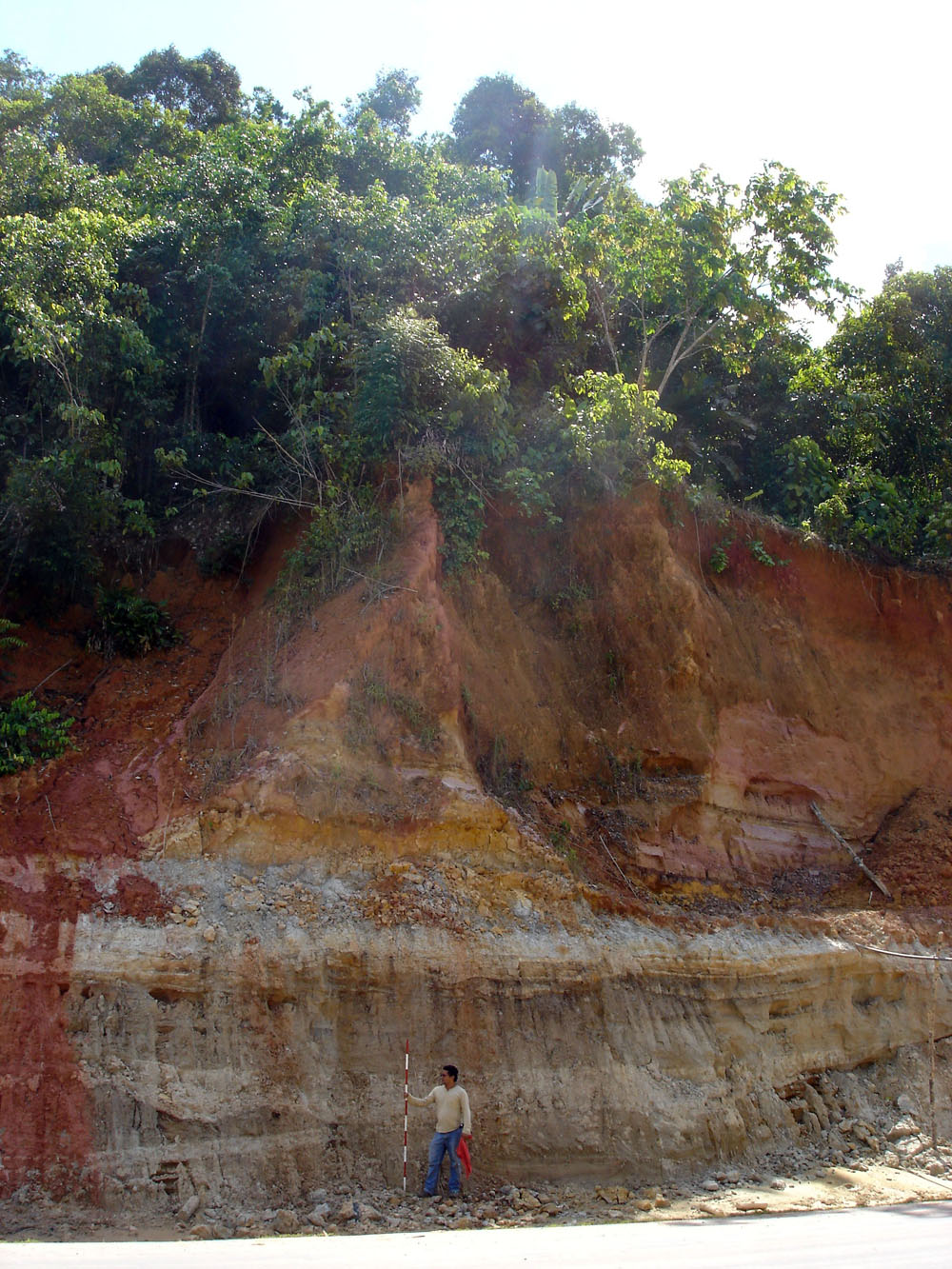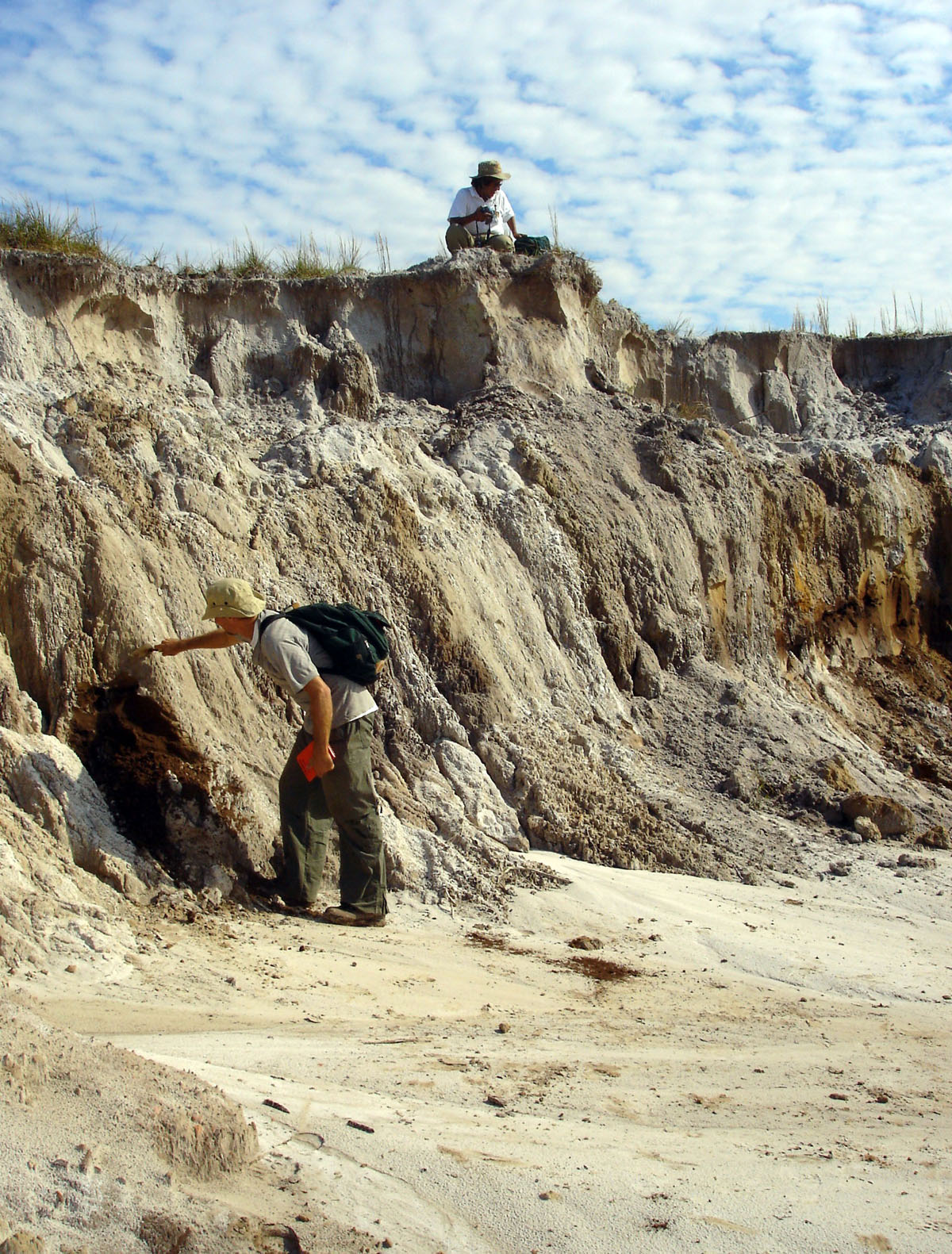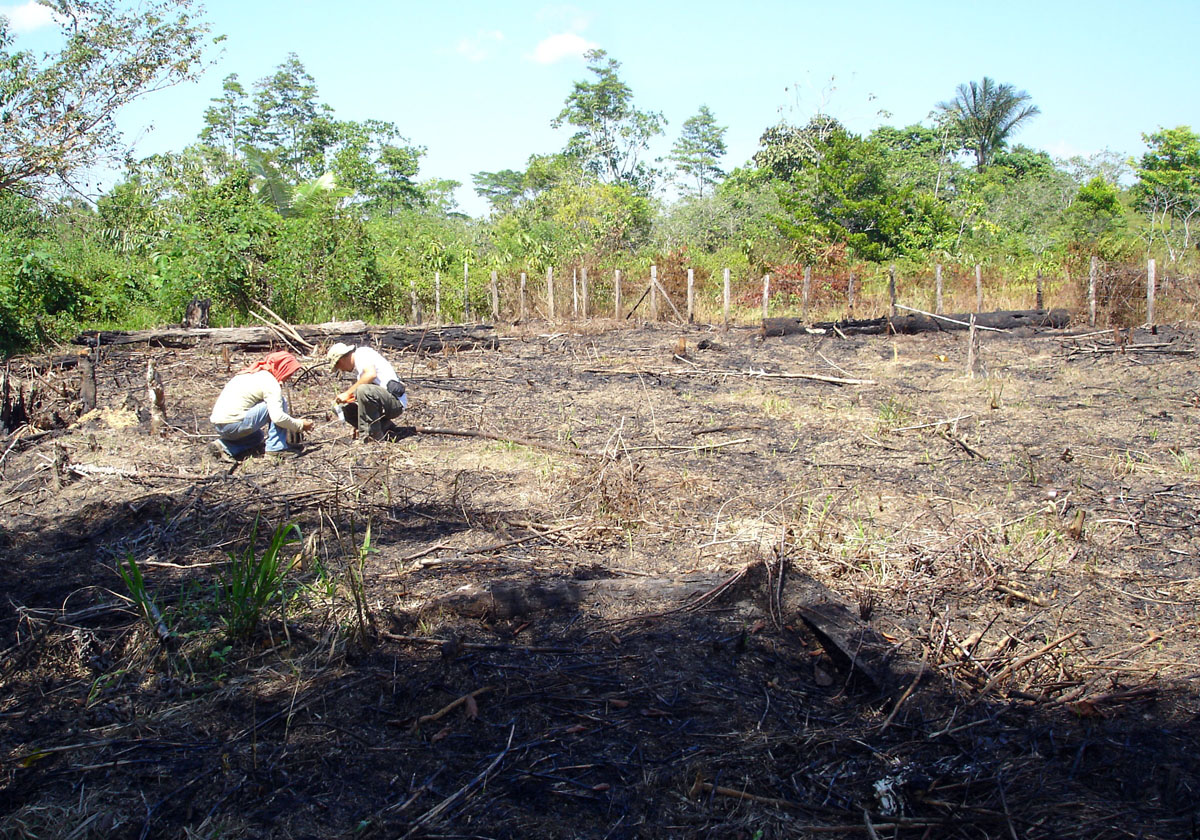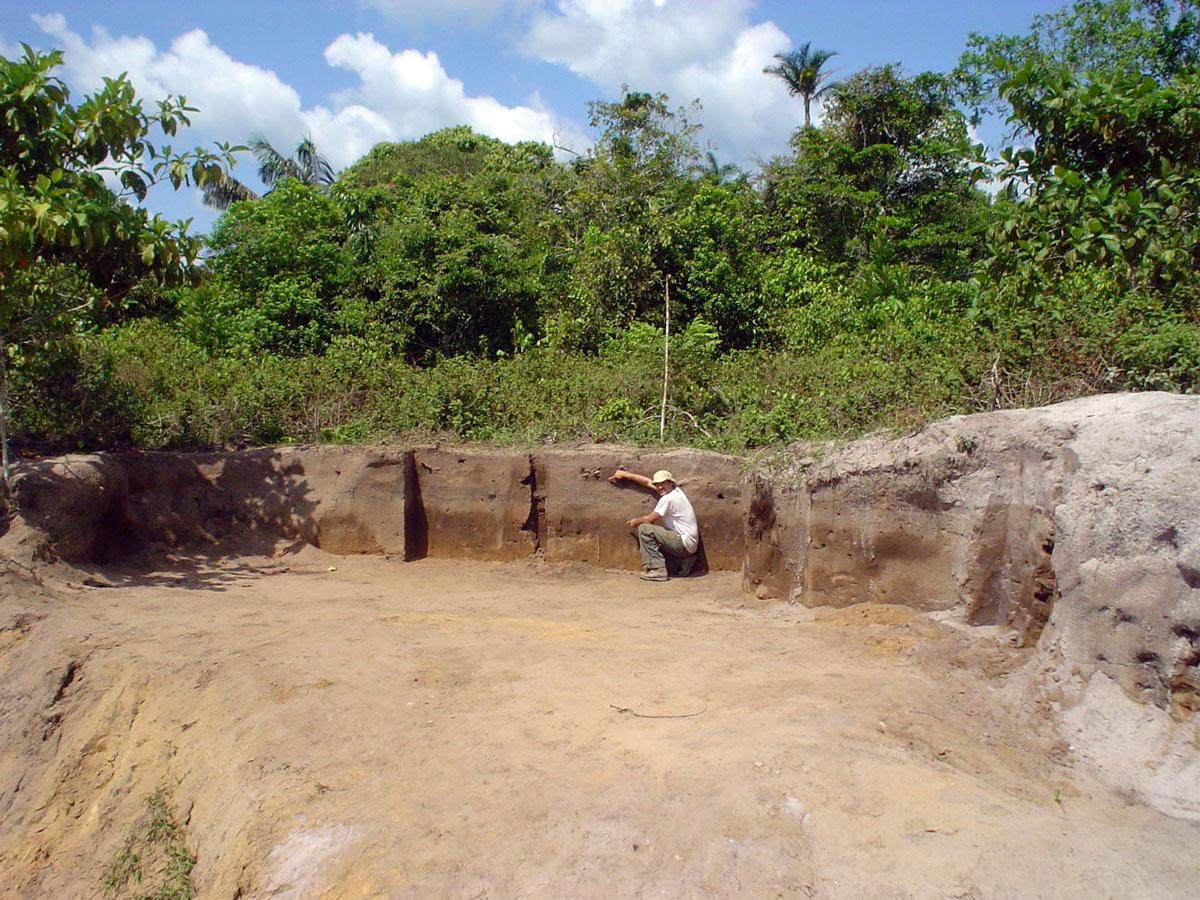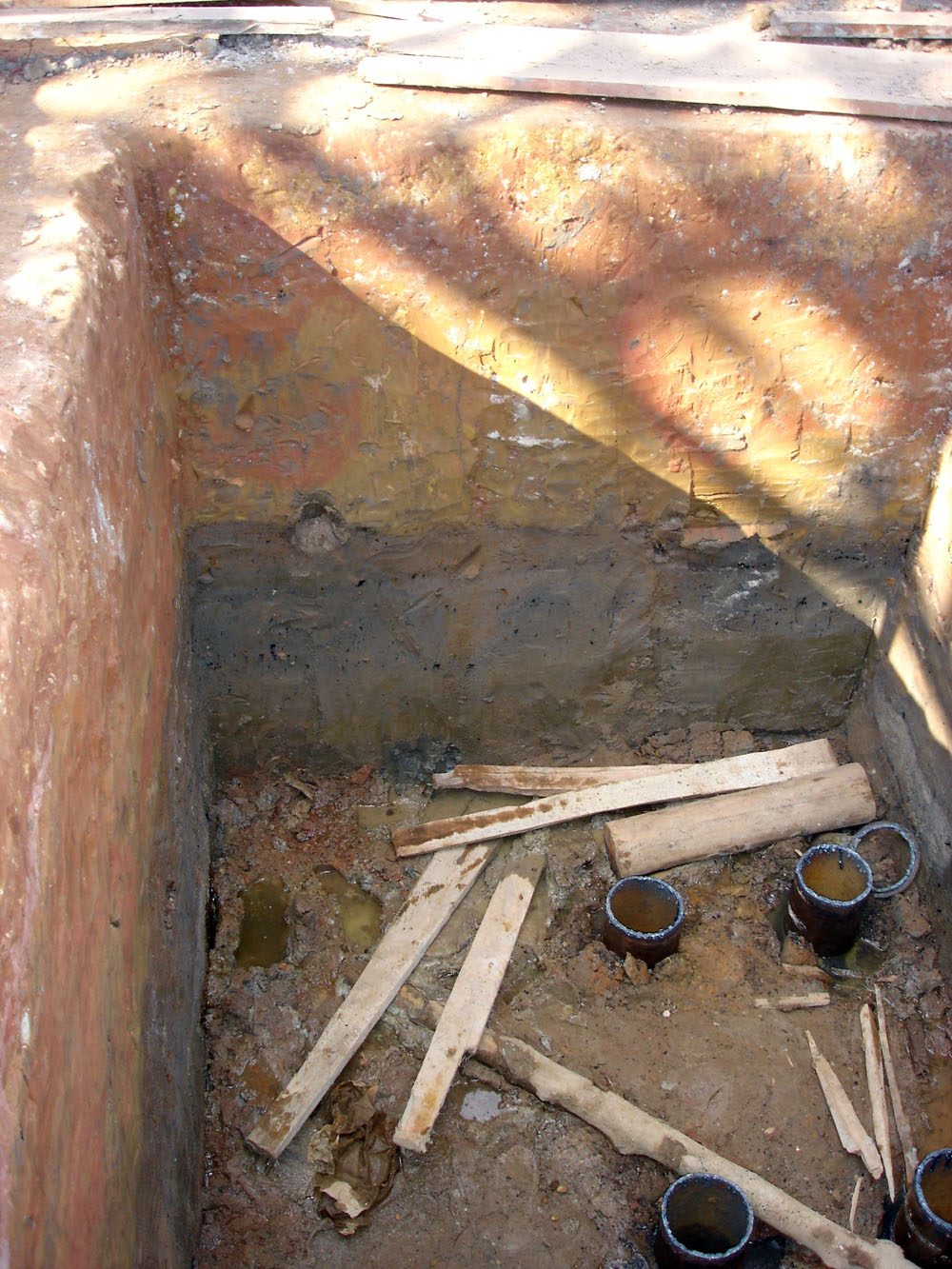Introduction: It has only recently been realized that pyrogenic carbon, biochar or black carbon (BC), can make up a significant fraction of the organic carbon in soils and sediments. As such, BC is an important but poorly understood portion of the global carbon cycle. Biochar also may be useful as an additive to soils to enhance fertility and sequester carbon due to its adsorptive properties.
My group studies the role of black carbon, composed primarily of charcoal and soot, in the carbon cycle. Only recently has black carbon been recognized to be a significant fraction of natural organic matter that is particularly stable and has high adsorption capacity for other compounds, and to understand its influence on climate, soil fertility and contaminant dynamics.Some of our past and current reseach projects are listed below.
RESEARCH PROJECTS:
Collaborative Research: Dissolved pyrogenic organic matter dynamics in the environment
with co-PI Dr. Sid Mitra (East Caroline University) and Dr. Pt Hatcher and Andrew Wozniak (Old Dominion University). Funded by: National Science Foundation: EAR – Geobiology and Low Temperature Geochemistry
Pyrogenic organic matter, or black carbon (BC), is derived from the incomplete combustion of biomass and fossil fuels. It is now recognized that this type of organic matter has a great impact on soil chemistry, transport of pollutants, climate and global carbon cycling. Further, its impacts will likely grow due to increased climate change-related wildfires and intentional addition of BC (as biochar) to soils to enhance soil fertility and C sequestration. However, while knowledge of the properties of natural and anthropogenic particulate BC has increased in recent years, there has been relatively little study of the properties and cycling of the organic matter that can leach from BC; pyrogenic dissolved organic matter (py-DOM). Although release of py-DOM into the environment may have unrecognized C cycling and environmental impacts, py-DOM has been quantified in only a few systems using methods that have not been comprehensively evaluated. This research will examine the fundamental chemical properties and mechanisms associated with py-DOM production and fate and the chemical markers used to quantify it. In addition, in order to broaden general awareness of the importance of fire on climate and the C cycle, we will develop an interactive exhibit at a local hands-on science museum that will include touch screen graphics, narrated videos by each of the PIs illustrating the scientific process and the research results.
To establish the chemical properties and mechanisms associated with py-DOM production and fate and the chemical markers used to quantify it, the project will: 1) produce py-DOM from a logical series of BC solids, both freshly produced and ‘aged’ via microbial and photic treatments, 2) chemically characterize these BC parent solids and their aqueous dissolved products using FTIR, Fourier transform ion cyclotron resonance mass spectrometry (FTICR-MS) and 1- and 2-dimensional NMR, 3) examine py-DOM loss and transformation after microbial and photodegradation treatments, and 4) quantify the yields of putative pyrogenic molecular markers; levoglucosan, benzenepolycarboxylic acids (BPCA) and oxygenated polycyclic aromatic hydrocarbons (O-PAH), from fresh and ‘aged’ BC solids and leachates. Using the same methods and experiments, the leachates and leachate alteration products of potentially interfering non-pyrogenic terrestrial organic materials, some of which we have recently shown to contain ‘BC-like’ compounds will also be examined. This work will test whether py-DOM chemistry can be linked to its parent BC type and ‘aging’ processes, the extent to which py-DOM and its molecular markers undergo major losses and chemical transformation through microbial and photo-oxidation, and whether currently used molecular markers for py-DOM accurately represent actual pyrogenic OM contributions to environmental samples.
Collaborative Research: Black Carbon Remineralization in the Environment: Physical and Chemical Controls
with co-PI Dr. Bill Cooper (Florida State University) and collaborations with Dr. Newton Paulo de Souza Falcão (Agronomy Department, INPA, Brazil). Funded by: National Science Foundation: EAR – Geobiology and Low Temperature Geochemistry
BC has generally been regarded as biologically and chemically inert due to its chemical structure and longevity in the geosphere. However, considering its estimated production rate by biomass combustion, it must also turnover at considerable rates (100-1000 years?). While recent studies have recorded measurable degradation rates in short-term microbial incubations, little is known as to the range of degradation rates that occur with different BC forms, or the chemical and physical variables that control rates of microbial utilization. This study will examine the relationships between BC, OM, and microbes with a focus on examining the relative importance of chemical and physical factors on BC degradation in soils.
The series of integrated laboratory BC-microbial incubations, OM adsorption experiments and field-based soil studies proposed will provide a strong theoretical foundation for understanding the cycling of BC in the environment. Materials for these experiments will include both BC reference materials recommended by the International BC Steering Committee and BC produced by the PI by combustion of a variety of wood and grasses under a range of controlled temperature and oxygenation conditions. The surface chemistry of these materials will be characterized before and after lab and field incubations by 13C-NMR (functional groups) and potentiometric titration (surface charge), and the surface morphology (external and internal surface area and pore size distribution and volume) by CO2 sorptometry (an improvement over commonly used N2 sorptometry). Each of these parameters will be related to rates of microbial degradation measured via CO2 evolution in the laboratory, and BC loss and aggregate formation measured in tropical soils in Brazil. In addition, incubation/adsorption experiments will be used to determine the potential for labile OM ‘priming’ to enhance BC degradation and for OM adsorption to sequester and preserve labile organic carbon within BC.
Collaborative Research: Pre-Columbian human impacts on Amazonian ecosystems with lead-PI Mark Bush (F.I.T), Dolores R Piperno (F.I.T.) Miles Silman (Wake Forest) Funded by: NSF – ECOLOGICAL BIOLOGY CLUSTER
The view that humans exploited and extensively modified Amazonian ecosystems before 1492 (“pre-contact”) is becoming mainstream in archaeological and ecological thought. The widespread use of fire for slash and burn agriculture, coupled with “gardening” the forest to enrich the proportion of useful plants, may have resulted in an Amazonia that anthropologists have called a “Cultural Parkland.” Under this hypothesis, many of the systems that ecologists have assumed to be “mature” or “undisturbed” may be only one to several tree generations removed from intensive management. If Amazonia is indeed a cultural parkland, it has radical implications for our understanding of ecological gradients, biodiversity distribution, and ecosystem function, as well as conservation and global change biology. The evidence for pervasive human impacts, however, is based upon basin-wide extrapolations from major archaeological sites and a broader ground-truthing of human disturbance is
needed. We propose to investigate the timing and spatial extent scale at which pre-Columbian human occupation and fire influenced ecosystems. We will generate and test an expert-guided predictive model of human occupation in Amazonia, and conduct paleoecological analyses of ~300 soil samples collected along trans-Amazonian transects, a literature review of >1400 soil profiles, and a coupled lake-soil paleoecological study at 6 locations. Preliminary data point to the importance of solar cycles in determining periods of wildfire in Amazonia, but very little is known of the spatial extent of these burns and whether the least seasonal forests were affected by them. This is the first analysis to address the extent of Pre-Columbian impacts on Amazonian ecosystems integrating input from ecologists, paleoecologists, anthropologists, archaeologists and biogeochemists in a basinwide study.
An investigation of Peruvian Black Soil (Terra Preta) – Chemical variability and mechanisms of organic carbon preservation. Funded by: University of Florida, School of Natural Resources – Faculty Support Grant
‘Terra pretas’ or ‘black earths’ are small areas of fertile anthropogenic soils found within the Amazon watershed. While surrounded by soils generally too infertile to support agriculture, terra preta are rich in organic matter and other nutrients and can be sustainably cultivated. Radioactive carbon dating and the occurrence of ceramics identifies these soils as prehispanic in origin and organic geochemical indicators suggest the involvement of some type of burning different from the modern method of slash-and-burn agriculture which leads to infertile soils within a few years. However, the origin of these soils is still a hot topic of debate. One barrier to our understanding of the nature and generation of terra preta is a lack of knowledge concerning their geographic and chemical variability. To date, only Brazilian terra pretas have been closely examined and geochemical examination of these soils have been limited. The research proposed here expands the geographic and cultural range of terra preta that have been examined and the geochemical tools that have been brought to bear on the question of their origin.
The geochemical research objectives are compatible and inseparable from those of the anthropological research (Dr. Augusto Oyuela-Caycedo, UF – Dept of Anthropology) in that they include the identification and excavation of new terra preta sites in the Peruvian Amazon in conjunction with Universidad Nacional de la Amazonia Peruana (UNAP), Iquitos, Peru. The following questions will be addressed:
What geochemical variability exists within and between terra preta in both organic matter and mineral fractions?Were certain soil-mineral types, landforms, or pre-existing vegetation types favored for terra preta production? By what mechanism is organic matter preferentially preserved in terra preta soils (within mineral nanopores, as sorbed coatings on certain mineral types such as layer-clays, as refractory slow-release organic compounds)?
Pictures
During July, 2005, our research team surveyed soils in the area around Iquitos, Peru. We found many dark layers with charcoal fragments, likely from past agricultural activities. We also found some dark soils with associated ceramics. Geochemical analysis is ongoing.
Photos from the Iquitos area:
